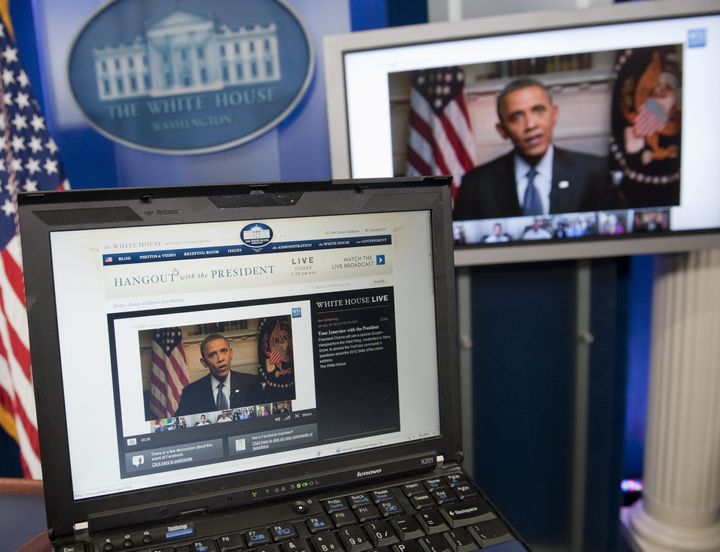
This year, supporters of presidential candidate Mitt Romney learned that the former governor had selected Paul Ryan before Romney made his publicized announcement. On November 7, millions of backers of President Obama awoke in the morning to an email from the President thanking them for their support. And who can forget "the Tweet seen 'round the world": the President's announcement of "four more years" accompanied by a photo of the First Couple, already being called the most shared image in history.
Quite clearly, technology played a larger role in the 2012 campaign than ever before. And as a result, we had one of the most communicated campaigns in history -- both between candidates and voters and among voters with each other.
Despite the increasing dominance of the 24-hour news cycle, which keeps us inundated with news, voters did not rely just on their televisions or even computers for information. Their mobile devices were also a major source of information.
According to research released recently by Frank N. Magid Associates on behalf of the Application Developers Alliance, a vast majority of app users -- 85 percent -- used an app to follow or learn about issues related to the Presidential campaign. This figure was lower for Members of Congress, at 19 percent for the Senate and 14 percent for the House -- but still demonstrates the impact of mobile apps and devices on communication.
And, the research shows, mobile devices didn't just impact communication, but they also impacted decision-making. Of the election app users, one quarter indicated that information they learned from apps helped them to explore issues and, ultimately, decide on the best candidate.
Mobile devices also opened a new door during the campaign by facilitating donations. Research from the Pew Internet & American Life Project found that about 10 percent of 2012 campaign donations were made from cell phones. Of course, this means that traditional methods are still preferred, but mobile applications (specifically by text message or app) are growing.
This changes the nature of political donations, allowing donors to contribute almost instantly -- and can result in more, albeit smaller, donations. A donor may be willing to text in a small donation, but would not necessarily take the time to write an equivalent check. Notably, more Democrats voted this way (15 percent), while Republicans favored traditional means of donation (6 percent).
But technology did not just change the public's interactions with the candidates; it changed the ways in which the public interacted with each other.
According to data from SAP America -- which analyzed both SMS (texting) traffic and social media traffic across the country -- traffic peaked both during the debates and on election night.
SAP found that texting traffic peaked at over 106,000 messages per second at around 11:20 EST on Tuesday, right after news organizations began calling Ohio and, with it, the election. This was roughly 60 percent above normal, and the increase continued, with texting still at 40 percent above normal from 2 am to 3 am.
Similarly, SAP found an increase in social media traffic; their research included Facebook, Twitter, forums, blogs and microblogs. Because their analytics captured sentiment as well as volume, they were also able to demonstrate that roughly around the 11:20 p.m. mark, positive traffic spiked heavily around Obama, while negative traffic spiked for Romney.
This campaign's use of technology as facilitator of communication is not an anomaly -- it's a sign of the future. It also, remarkably, has helped to usher in increased democratization of the political process. Voters have more resources from which to learn, including -- for better or worse -- each other. And 2012 has proven that those who will succeed are those who will embrace this new opportunity.